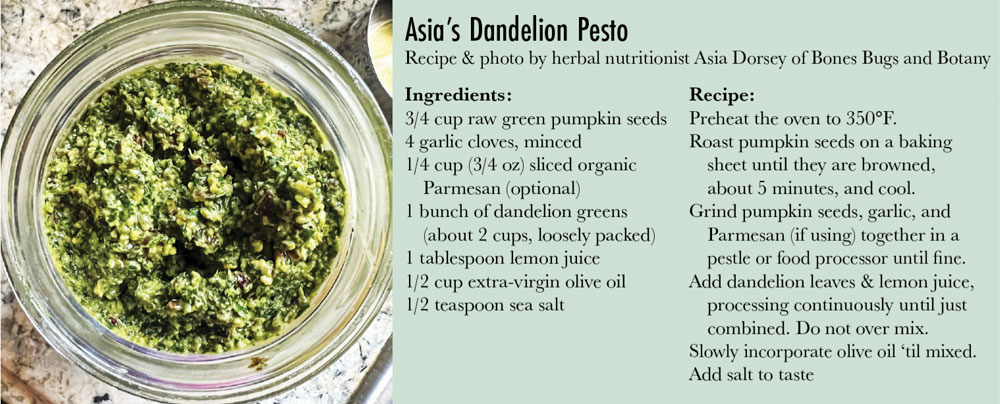
Left: dandelion greens are rich in antioxidants, vitamins, calcium, iron, and potassium. They can be eaten raw or cooked. Photo by Asia Dorsey. Right: purslane, a crunchy, tangy weed, contains omega-3 fatty acids, vitamins, and minerals. It’s especially good in salads. Photo by DUG Corps member Nick Hopkins.
One person’s yard menace is another person’s food. Denver Urban Gardens (DUG) has identified five edible weeds commonly found in Denver’s parks, yards, gardens, and sidewalks: dandelion greens, lamb’s quarters, plantain leaves, purslane, and mallow. Nutritional powerhouses, they have fiber, a variety of vitamins like C and K, and minerals like iron, magnesium, and calcium. They can be prepared in salads, sautés, and even pesto sauce. The trick is getting people to stop thinking “weed” and start thinking “dinner.”
Niko Kirby, director of education strategy and engagement for DUG—a network of food-producing community gardens providing access, skills and resources to grow healthy food—says foraging for and eating these plants is nothing new.
“In many ancient and traditional indigenous societies, there was no distinction between cultivated plants and weeds when it came to foraging for food. In a hunter-gatherer society, foraging for wild plants was the primary way people had sustenance and nutrition,” Kirby explains. “When we started making agriculture ‘a thing’ 10,000 years ago, we began cultivating specific plants rather than just foraging for them.”
Part of the challenge of changing negative perceptions of weeds is fighting “the aesthetic norms of manicured lawns and orderly garden beds being ‘the right way’,” says Kirby. “A lot of these weeds play crucial roles in supporting pollinators, improving soil health, and providing habitat. Instead of having a mindset that this thing is bad so I’m going to kill it, recognize that every plant has a part to play in the ecosystem.”
Before randomly picking weeds to eat, Kirby suggests avoiding places likely to be contaminated, including high foot traffic areas, places where dogs are often walked, and near roads or industrial sites.
One way to control the contamination level is purposely growing plants using seeds for edible weeds available through specialty seed companies. Growing them in a container can help stop them from spreading like, well, weeds.
“In general, weeds tend to be plants that flourish and do well, so homeowners shouldn’t expect that plants stay contained. Deadheading the flowers or cutting them off can help,” she explains.
To get the highest nutritional value from the plants, Kirby says they should be eaten soon after picking but can be stored in the refrigerator like fresh herbs.
“Rinse weeds well to remove dirt or debris. You can soak them in a solution of one part vinegar to four parts water to help kill bacteria. I use a salad spinner to make sure they’re moist but not wet, wrap them in a damp paper towel, and put that in the fridge.”
Cooking can also help kill remaining bacteria including blanching greens by boiling them and then plunging them into ice water.
Kirby suggests using resources for identifying and cross-referencing plants at different stages of growth to ensure only edible plants are being picked. She also encourages connecting with local groups or online resources to identify safe places to forage.



0 Comments